Captain Beefheart - Trout Mask Replica
by Jon Rogers
published: 1 / 12 / 2009
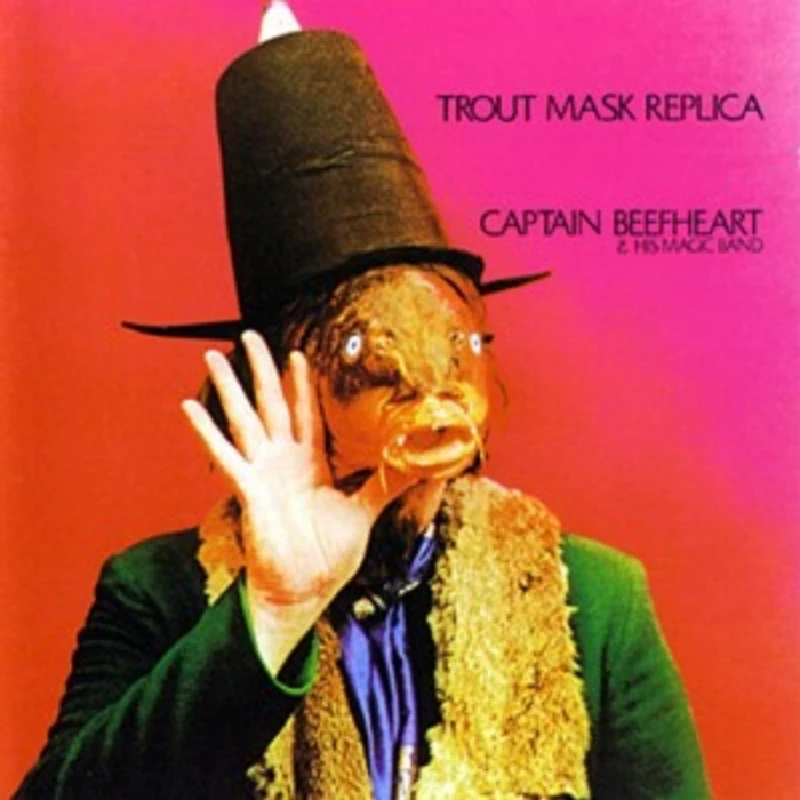
Label:
Select Label
Format: N/A
intro
In our 'Re; View' series, in which our writers look back at albums from the past, Jon Rogers reflects on Captain Beefheart's surrealist 1969 album, 'Trout Mask Replica'
‘Trout Mask Replica’ is no easy listen. It’s a sprawling double album of surrealist jazz, deranged delta blues like Charlie Patton and Skip James as well as apparently nonsense lyrics, jarring chords and random time signatures that leave the listener frazzled and disorientated thinking "just what the hell have I been listening to?" I admit to having difficulty listening to Captain Beefheart’s most accomplished work all the way through in one go. It’s tough; often it seems that all the musicians are playing a totally different tune to one another, creating a headache-inducing cacophonous dissonance. And the lyrics are just as odd. There are some straight forward lyrics as with ‘Dachau Blues’ and ‘Veteran’s Day Poppy’ but for the most part they seem to be nonsense lyrics of the first order, enough to make Edward Lear sit up and take notes. Just what is to be made of ‘Neon Meate Dream of an Octafish’: “Speckled speculation Fedlocks waddlin’ feast Archaic faces frenzy Ceramic fists artificial deceased ‘n cists rancid buds burst” And yet ‘Trout Mask Replica’ is utterly compelling, drawing you into its world. It gives no quarter, no compromise. His idiosyncratic vision is pasted across all 28 songs, forming one of the most comprehensive and enduring musical visions in rock. This mystification was the intent though as Beefheart explained to Lars Movin in 1991: “It is trying to break up the mind in many different directions, causing them not to be able to fixate. This is what I was trying to do.” After various problems with the record industry over Beefheart’s first two albums this was his first record where he had complete artistic control and his eclectic musical vision could be let loose. And that vision would have a lasting impact on the more artistic end of rock ‘n’ roll to this day. The album may sound uniquely special, especially to someone brought up on traditional, mainstream rock songs but Beefheart drew on American musical traditions, most notably the blues of Charlie Patton and Howlin’ Wolf and the atonality of free jazz exponents like Ornette Coleman and Albert Ayler. While it may sound at times like each of the musicians are randomly playing with no notice of what everyone else is doing the songs were carefully orchestrated. According to Ben Watson’s study of Zappa in ‘Frank Zappa and the Negative Dialectics of Poodle Play’, the songs on ‘Trout Mask Replica’ were anything but experimental. There’s no improvisation on the album and all the parts were carefully worked out beforehand. As Henry Cow’s guitarist noted in 1974, “It is always alarming to hear people playing together and yet not in any recognisable rhythmic pattern. This is not free music. It is completely controlled all the time, which is one of the reasons it’s remarkable.” Still, to use the lingua franca of the day, it’s still pretty far out. And if the music wasn’t strange enough there was Beefheart’s lyrics to contend with. Beefheart dipped into folk tales and mixed that up with surrealist nonsense and added his own neo-Beat poetry. Beefheart has stated that some of the lyrics were poems in their own right originally, but had a musical quality, like the poems Lawrence Ferlinghetti and Robert Creeley were creating in the 50s. Often though he would just use his vocals as an instrument, not using words to tell a tale but for the sound they made. Like the Futurists, Beefheart at times used words for their onomatopoetic value rather than their actual meaning. In ‘Hobo Chang Ba’ the opening lines are: “Strawwood claw rattlin’ m’ jaw I can’t call it usin’ It’s just sumptin’ soothin’ Feather times uh feather” And not to forget the odd sprinkling of corny, slightly risqué especially for 1969, puns: “I knew you were under duress I knew you under yer dress.” Sex was a big preoccupation of the band on the album. ‘Neon Meate Dream of an Octafish’ described the act of copulation itself while the instrumentals, ‘Hair Pie: Bake 1’ and ‘Hair Pie: Bake 2’, take their title from a slang term for cunnilingus. Just in case anyone wasn’t quite sure what was being referred to at the end of ‘Bake 1’ there’s a recording of a conversation that Beefheart and Hayden had with a couple of kids in the garden who had come to check out what was going on. Beefheart asks them what they think to the music to which he gets the rather unconvincing reply, “Sounds good”. Then he explains to the kids that, “It’s a bush recording. We’re out recording a bush.” And if the lyrics seemed like gibberish on first hearing them there was method behind the madness. While songs like ‘Neon Meate Dream of an Octafish’ read like incomprehensible ramblings Beefheart drew on Imagist and Surrealist concepts. From the Imagists he took the desire to be exact and precise in descriptions and jettison anything that wasn’t essential. From the Surrealist leader André Breton he got the notion of juxtaposition where such literary devices could “unlock the potential of meaning”. Using two opposing words a new form or image could be created out of this disparity, like Beefheart’s phrase “whale bone fields ‘n’ belts”. This method had also been used by the Beats, in particular Allen Ginsberg in his famous poem ‘Howl’ with phrases like “hydrogen jukebox”. ‘Orange Claw Hammer’ drew on a much older tradition, that of the sea shanty. The song was one of the few “field recordings” Zappa made at the house before the band moved into the studio. The clicking of the pause button at the end of a few of the lines can be heard whilst Beefheart thought of the next line. While still childhood friends Frank Zappa had lent Beefheart a collection of traditional sea songs called ‘Blow Boys Blow’ sung by AL Lloyd and Ewan McColl. Beefheart never gave the album back and even in 1980 he was saying it was his favourite album. ‘Orange Claw Hammer’ uses the basic structure of an old sea shanty with repetitive phrases and rhythms. The song also uses the notion of the ‘Ancient Mariner’ who has been at sea for 30 years only now returning home. The song also owes a nod of gratitude to Hart Crane’s epic 1930 poem ‘The Bridge’ and in particular the ‘Cutty Sark’ section which draws on American vernacular patterns to tell the tale of a sailor who ventured up to “that damned white Arctic”. Another one of those “field recordings” was ‘The Dust Blows Forward ‘N The Dust Blows Back’, an acappella song just featuring Beefheart singing in a creaky voice, and like ‘Orange Claw Hammer’ the listener can hear the click of the pause button at the end of each line. In fact, as Beefheart explained to Roger Ames in 1974, the clicking actually added to the song: “[It] was recorded in the house on a cassette. It was just me with the cassette. That was an impromtitudinal [sic] poem. I used the clicks from switching the mike on and off to create the space. A lot of the songs on that album were poems.” Two very contrasting songs were ‘China Pig’. Doug Moon and Beefheart had been playing an impromptu version of Mississippi John Hurt’s ‘Candyman’ when Beefheart asked Moon to play something “chunga, chunga, chunga.” What he played, a simple blues, with Beefheart recounting a tale of penury, became the song. At the other extreme was the oddball ‘The Blimp (mousetrapreplica)’ which was a spontaneous poem, supposedly based on the newsreel of the Hindleburg airship crash. Zappa described how the song came about in 1993: “I was in the studio mixing some other tapes, and the band that’s actually playing on ‘The Blimp’ is actually the Mothers of Invention. The vocal on ‘The Blimp’ was recorded by telephone. He had just written these lyrics, and he had one of the guys in the band recite it to me over the phone. I taped it in the studio, and recorded it onto the piece of tape that I had up at the time, which was my track. The piece is called ‘Charles Ives’. We used to play it on the ’68-’69 tour.” Beefheart took all these strands and put them in a traditional Tin Pan Alley pop format. Few of the 28 songs on the album are over three minutes long and most just break the two minute mark. But the price of Beefheart’s musical opus would be a costly one, it strained his friendship with Frank Zappa who he had known since childhood and fractured the band. Captain Beefheart had been born Don Vliet in Glendale, California on 15 January 1941 but the family relocated to Lancaster on the edge of the Mojave desert. Whilst attending Antelope Valley High School he became friends with Frank Zappa who shared a love of Chicago blues and doowop. Zappa would comment to 'ZigZag' in 1970 about his schoolboy friendship: “Don and I used to get together after school and listen to records for three or four hours. We’d start off at my house, and then get something to eat and ride around in his old Oldsmobile looking for pussy – in Lancaster! Then we’d go to his house and raid his old man’s bread truck and eat pineapple buns and listen to records until five in the morning.” The records they would listen to were usually ex-jukebox singles that they could pick up cheaply and included recordings made for the Excello label by bluesman Lightnin’ Slim, West Coast R&B by the likes of Clarence ‘Gatemouth’ Brown, Johnny ‘Guitar’ Watson, Chuck Higgins and Joe Houston as well as the Chicago urban blues of Howlin’ Wolf and Muddy Waters. Doowop was also part of their musical diet by the likes of the Spaniels, Nutmegs, Paragons and Orchids. It was around this time that Beefheart started to lose interest in formal art and turned more towards music. “I realised that sculpture was too pointed,” Beefheart recollected. “I’ve always liked human noises, like animal noises and things like that, natural sounds. I got a more natural feeling out of say, country blues, field hollers, and things like that and progressive stuff. I was looking for something that extended rather than caging.” After nothing became of their planned band, Soots, together Zappa went off to form the Mothers of Invention while Beefheart, who now called himself Van Vliet due to his father’s Dutch heritage, took the name Captain Beefheart after Zappa suggested the name and became a member of the Magic Band which had been formed earlier by guitarist Alex St Clair with bassist Jerry Handley, guitarist Doug Moon and drummer Vic Mortensen. In spring 1965 the band was spotted playing the annual Hollywood Teen Fair and were signed to A&M who went on to release two singles by the band, a cover of Bo Diddley’s ‘Diddy Wah Diddy’ and ‘Moonchild’ which can now be found on ‘The Legendary A&M Sessions’. Radio DJ John Peel became an early admirer of the band after coming across the first single in a record shop’s reject bin whilst working at the San Bernadino radio station KMEN in 1966. He would later see the band supporting Them at Los Angeles’ Whiskey-A-Go-Go, commenting that “It was like hearing Elvis for the first time. I reeled out into the Hollywood night knowing that nothing would ever be the same again.” The gig would be right up there in Peel’s list of favourite ever concerts, a list that included Pink Floyd in Hyde Park, Little Feat at the Rainbow and the Faces in Sunderland. The band then recorded some demos for a potential album but these were rejected by both Jerry Moss and Herb Alpert who described them as being “too negative.” Moss even said that he couldn’t release ‘Electricity’ because “it wouldn’t be good for my daughter.” A&M dropped them, only for Kama Sutra offshoot Buddah run by Bob Krasnow, to show an interest. There was also a line-up change with Blakeley leaving in October 1966 to be replaced by John French. “My first impression was that Don was very opinionated,” recalled French years later. “He made people feel uncomfortable because he forced his opinions on them. However he could also be quite charming. I asked about his voice, and he told me he had been influenced by Howlin’ Wolf.” In spring 1967 just as the band was about to record their first album the 20-year-old guitar prodigy Ry Cooder was brought in to be a sort of musical foil to Beefheart’s musical vision. ‘Safe as Milk’ was recorded in early 1967 and contained some great songs like ‘Sure ‘Nuff ‘N Yes I Do’ and ‘Zig Zag Wanderer’ as well the superb ‘Electricity’. But despite the support of Peel who played the album on his Perfumed Garden radio show sales were disappointing. Cooder didn’t last long in the band and left before the album could be released and was replaced by Jeff Cotton who joined just in time to start work at TT&G Studios on a proposed double album to be called ‘It Comes to You in a Plain Brown Wrapper’. According to French half the album was to be made up of Magic Band songs with the other half being “a kind of psychedelic blues-jam group” called the 25th Century Quaker. The project was never finished, mainly because Buddah didn’t like the group’s strange new direction, but the seeds of ‘Trout Mask Replica’ were being sown. Some of those tentative tracks can, supposedly, be found on ‘The Mirror Man Sessions’. After a tour of the UK in February 1968, where Peel had driven the band around the country to play gigs, the band re-recorded some of their ‘Brown Wrapper’ songs and whilst they were on tour in the UK again Krasnow, allegedly wired on strong acid, mixed what was to become ‘Strictly Personal’ without the band’s knowledge. Krasnow plastered the album in studio trickery like phasing in an attempt to cash in on Beefheart’s “weirdness” and released it on his own Blue Thumb label. The band weren’t happy and Beefheart told Kris Needs in 1977, “Can you believe some of the mixes those monsters pulled on me, like the alka seltzer fizz they put on ‘Strictly Personal’?” But for Beefheart the songs “shine through like a diamond in the mud.” While Beefheart may not have like the album too much, and it quickly died a death on its release, it has become something of a great blues/psychedelic album with strong tracks like the opener ‘Ah Feel Like Ahcid’ and the stunning ‘Kandy Korn’. But the band were quickly without a label once again and there were more changes to the line-up. Alex St Clair left, disillusioned, to be replaced by Bill Harkleroad and the only other original member Handley, who disliked the lack of blues being played, left as well with Mark Boston taking his place. The band was somewhat in limbo, adrift without a label and there were no original members left. Zappa returned on the scene at this point to help his old friend out. According to legend the two bumped into one another at a Colonel Sanders chicken joint. At the time Zappa had been making some impact with the Mothers and was getting his Straight imprint off the ground and once the band had been extracted from Krasnow’s clutches the Magic Band signed to Zappa’s label on the promise of complete artistic control. The new-look band went into Sunset Sound with Zappa as producer and managed to record ‘Moonlight on Vermont’ and ‘Veteran’s Day Poppy’ before Zappa and Beefheart clashed. Beefheart removed the band from the studio and shut the band up in a house on Ensenada Drive, Woodland Hills, to start rehearsals which lasted six months in squalid conditions with the band often tripping on acid. Rehearsals would often go on for 12 hour stretches. Mike Barnes, in his biography ‘Captain Beefheart: the Biography’, wrote, “Sometimes the musicians would have to sort out passages where different-length parts in different metres had to hit a cue, or where sections were missing. Van Vliet would typically say, ‘You guys know what to do,’ or would just run his hands over the piano to give the hitherto missing part.” Conditions in the house were terrible and band members treated appallingly, according to an article Miles wrote for 'ZigZag' in October 1969. Zappa agreed and referred to conditions in the house as being like a cult, as has French. A friend of French’s is cited in Mike Barnes’ biography of Beefheart as describing the situation as “Manson-esque” The band were shut in for weeks on end with no contact with the outside world. And drugs were all over the place with LSD being the usual drug of choice, no doubt fuelling Beefheart’s belief that the house was built on the site of Native American burial ground and that he could communicate with their spirits. Beefheart was having a tyrannical hold over the other musicians. He persuaded them that women and sex would interfere with the music and so the band just played and played. Then there were the ‘brainwashing’ sessions, fist fights that broke out in the fractious atmosphere. There was no money either and they starved, were struck down with illnesses and could often be found wandering around looking for food. One was even found wandering around in a woman’s dress, boots and a helmet and a crazed look in his eyes. Eventually they all would leave at one point or another, but most came back for food and to recuperate. The group even got arrested once after a shoplifting spree because they had no money to buy food and had to get Zappa to bail them out. And Beefheart was suffering from egomania, telling Miles, “I’m a great poet, better than those cats like [Allen] Ginsberg, because I let it flow, I can’t stop it. I’ve got books and books of stuff. I’m a great horn player, man – I’ve already exhausted the instrument. I’ve done everything that can be done with it. Really I need a whole new art form.” Beefheart, now firmly the band leader, gave each member an exotic alter ego: French became Drumbo, Harkleroad was Zoot Horn Rollo, Cotton became Antennae Jimmy Semens and Rockette Morton was Boston. The Mascara Snake was Beefheart’s cousin Victor Hayden who played bass clarinet. Most of the songs were composed by Beefheart on the piano, an instrument he supposedly didn’t know how to play. While Beefheart would write the songs it was up to French to sculpt the songs into a format the rest of the band could understand. For hours French and Beefheart would sit together with Beefheart playing the basic song and French would transcribe what he heard for the others to learn. Zappa originally intended to make the album as if it was an “anthropological field recording” made at the house but what became ‘Trout Mask Replica’ was recorded at Whitney, a Glendale studio owned by the Mormons. Zappa’s original idea, according to his autobiography ‘The Real Frank Zappa Book’ was to get his engineer Dick Kunc to bring along his Shure eight-channel mixer remounted in a briefcase. The drums would be in the bedroom, the bass clarinet in the kitchen and the vocals in the bathroom, effectively keeping all the instruments separate and in isolation. But, according to Zappa, Beefheart got paranoid, accusing Zappa of trying to make the album on the cheap and insisted the band go into a proper studio. Kunc recollected later, “They were certainly well rehearsed. I seem to recall it was pretty much controlled chaos, with Don very much in command.” After months of rehearsals at the house the band were familiar with the songs and careered through most in just one take. Beefheart, famously, recorded the lyrics without the use of headphones, merely going on the sound leaking from the control room. All 28 songs were completed in just four days. The entire album, including mixing and editing by Zappa, was finished at around 6 a.m. on Easter Sunday 1969. In fact Beefheart’s unusual recording style would be the factor to put the relationship between the two childhood friends under pressure. Zappa was annoyed by how Beefheart recorded in the studio and how the vocal mike was set up. This meant that Zappa had to push the recording levels up to the maximum, creating hiss on the tapes, in order to get anything. According to Beefheart about his way of recording was “Well, that’s just the way it is.” The drums were also recorded in an unconventional manner, Beefheart demanded that the cymbals be covered with corrugated cardboard to act as a mute and that circular pieces of cardboard were placed on the drum heads. Beefheart had mixed feelings about the album. According to Miles, he appreciated that Zappa had given him the chance and freedom to record what he wanted without interference, although he would have liked to have spent more time on it. But he didn’t appreciate Zappa taking all the credit. In a later interview he stated: “Zappa wanted to pretend that he had done ‘Trout Mask Replica’, on which he had done nothing but go to sleep at the mixing board. It was way over his head. Not really over his head, just too unstructured and telepathic for him because he is so formed and regimented.” According to Miles, relations between the two got so bad during the recording that Zappa threatened to remix the entire album his own way. In the immediate aftermath of the recording their relationship would deteriorate even further with Beefheart taking exception to how Zappa and label manager Herb Cohen (owner of Bizarre) were selling him alongside the “freaks like that madman Wild Man Fischer and The GTOs”. He told 'ZigZag' in 1970, “I was told by Frank Zappa that I would not be categorised with anybody else. I was told by Frank that I would have, if you want to call it, special treatment, that I would not be advertised or promoted with any of the other groups on the label. But somehow I guess he got hard-pressed for cash, and decided that he’d round me up and sell me as one of the animal crackers. I didn’t like the idea of being labelled and put aside as just another freak.” Beefheart perhaps is nit-picking here. Just who else in 1969 would have let him record just what he wanted and then put it out? Without Zappa ‘Trout Mask Replica’ may never have seen the light of day. And if Beefheart hadn’t wanted to be grouped in with the “freaks” then the original gatefold album artwork did nothing to dispel that image. Ed Caraeff’s photo on the back shot the band using a sun-ring lens effect standing in a garden. The band didn’t exactly look like they were about to head off for a hard day’s work at the office in a nice suit and tie. Hayden, in his Mascara Snake persona, is wearing slit-eye sunglasses and Beefheart is holding a table lamp without a shade. The inside photos cast the band in garish, psychedelic colours. In an 'NME' interview in 1976 Beefheart actually acknowledged Zappa’s input saying, “I definitely appreciate Frank allowing me that out [‘Trout Mask Replica’] Nobody else would have... I would have liked to have taken a lot longer to put that album out, I would have liked to, but I would have probably ruined it if I’d had the time!” Even in 1971 Beefheart was still bearing a grudge. When asked by a reporter from 'The Georgia Straight' if he would ever work with Zappa again he replied sharply: “No. I shouldn’t have even worked with him when I did. Because I can’t work. He works, I play. There’s a difference.” Pushed on the subject, Beefheart added: “It’s not that I’m at odds with Frank. It’s just that I don’t wish to be around him. I’m interested in playing, not working.” Luckily though the pair would eventually bury the hatchet and work on the ‘Bongo Fury’ album together. But Beefheart’s concept of playing (no doubt he intended the pun) was central and gave an insight into the construction of ‘Trout Mask Replica’. For Beefheart, “Music is play. For instance, a child playing in a yard, right? A child playing in a yard doesn’t like to be called by his mother. I imagine the child wouldn’t even quit playing if it weren’t for someone disturbing him. So that’s what I mean.” And after 40 years the album is still a standalone classic, nothing else really comes close to encompassing what was achieved with its take on Delta blues, free-form jazz, madman hollerin’ and Dadaist skits and flights of fancy. Years later Beefheart would say that on the album he was trying to “mash up the mind in many different directions” while Zappa called it “a new musical language”. Famed music critic Lester Bangs would describe it in Rolling Stone as “the most outrageous and adventurous album of the year”. ‘Trout Mask Replica’ saw the light of day in the USA in July 1969 featuring what has become an iconic album cover of Beefheart holding up a Carp’s head (which was stuffed with paper and “really stank, man”). John French is conspicuous by his absence on the credits on the original release – but this is rectified on the CD reissue. Even at the time the album stood out from the other albums released in 1969. Up in Detroit the motor city was finding its rock legs with debut albums by the Stooges and the MC5 while Motown’s the Temptations found themselves on ‘Cloud Nine’. Folk rock hit big too with the Flying Burrito Brothers’ ‘The Gilded Palace of Sin’ and The Band’s eponymous album and Crosby, Stills and Nash released their debut while future collaborator Neil Young gave the world ‘Everybody Knows This is Nowhere’. After the sonic onslaught of the first two Velvet Underground and the departure of John Cale, Lou Reed took the band into more subdued areas with their third long-player. Other landmark albums released the same year included Johnny Cash’s ‘Live at San Quentin’ and Tim Buckley’s opus ‘Happy Sad’ while Leonard Cohen released more beautiful songs with ‘Songs from a Room’. Experimentation was also going on in jazz with Miles Davis’ groundbreaking album, ‘In a Silent Way’. Over in the UK the Rolling Stones were just hitting their purple patch with ‘Let it Bleed’ and the Who were getting all operatic with ‘Tommy. Dusty Springfield decamped to the South for her white-soul classic ‘Dusty in Memphis’. While folk rock may have been taking off in the US, Fairport Convention were sowing the seeds for the British variant with the sublime ‘Unhalfbricking’ and also released the equally important ‘Liege and Lief’. And the Beatles gave us their swansong in the shape of ‘Abbey Road’. The former teen idol Scott Walker delivered up another set of wonderful songs with ‘Scott 4’ and another singer who had ditched the band to go solo, Van Morrison, hit the heights with ‘Astral Weeks’. Which is a rather long-winded way of saying that there were a lot of important albums released in 1969 – but none sounded remotely like ‘Trout Mask Replica’. It’s uniqueness still stands today. It invariably ends up in the higher echelons of those ‘Greatest albums ever made’ lists that the glossy music monthlies love. It was placed at number 58 by Rolling Stone in the magazine’s ’500 Greatest Albums of All Time’ in November 2003. The album came in at number 28 in Mojo’s “The 100 Greatest Albums Ever Made’ in 1995. It’s cited by all and sundry as a lasting influence. Even the punks, who (superficially) had a slash ‘n’ burn take on their influences (“No Elvis, Beatles or the Rolling Stones in 1977”), admired Beefheart. Peter Laughner, in Cleveland’s Rocket from the Tombs, claimed to play the blues “Beefheart-style”. And Johnny Rotten/John Lydon would also express an admiration for the singer. The band’s influence endured to post-punk acts like Magazine and Devo as well as German krautrock bands like CAN. And bands like the Fall and Wire have drawn on the albums brute playing style. And many a less talented rock band with art pretentions have mistaken the albums apparent racket for thinking they can simply scream gibberish into a microphone over some awful, out of tune racket and think they are creating Art. Tom Waits is also a huge fan telling 'The Observer Music Monthly' Beefheart was “The roughest diamond in the mine... enter the strange matrix of his mind, and lose yours.” The former BBC Radio 1 DJ John Peel loved the album and played it to death on his radio show 'Top Gear' and would later cite it as his all-time favourite album. When the album finally got a UK release in November it made it all the way to number 21. In 1995 Peel commented on the album, “If there has ever been anything in the history of popular music which could be described as a work of art in a way that people who are involved in other areas of art would understand, then ‘Trout Mask Replica’ is probably that work.” Writing in 'The Observer' in 1986 he commented, “Captain Beefheart has, for twenty years, been the man at the heart of the music that has stirred and excited me, and echoes of his work, if not the work itself, are heard in every radio programme I do.” Rock critic Lester Bangs would put the record’s appeal in more excitable terms for the 'NME 'in April 1978: “’Trout Mask Replica’ shattered my skull, realigned by synapses, made me nervous, made me laugh, made me jump and jag with joy. It wasn’t just the fusion I’d been waiting for: it was a whole new universe, a completely realised and previously unimaginable landscape.” While critics may fawn over it the public at large also appreciate such a seemingly ‘difficult’ album. In an HMV poll to find the nation’s favourite albums in 1998, ‘Trout Mask Replica’ came in at number 42, just above David Bowie’s ‘Hunky Dory’. Now that the album has effectively reached middle age there’s still plenty of life in it to remain “fast ‘n’ bulbous”.
Track Listing:-
Band Links:-
https://www.facebook.com/pages/Captain-Beefheart-and-the-Magic-Band/16https://www.facebook.com/CaptainBeefheartOfficial
Have a Listen:-
Picture Gallery:-
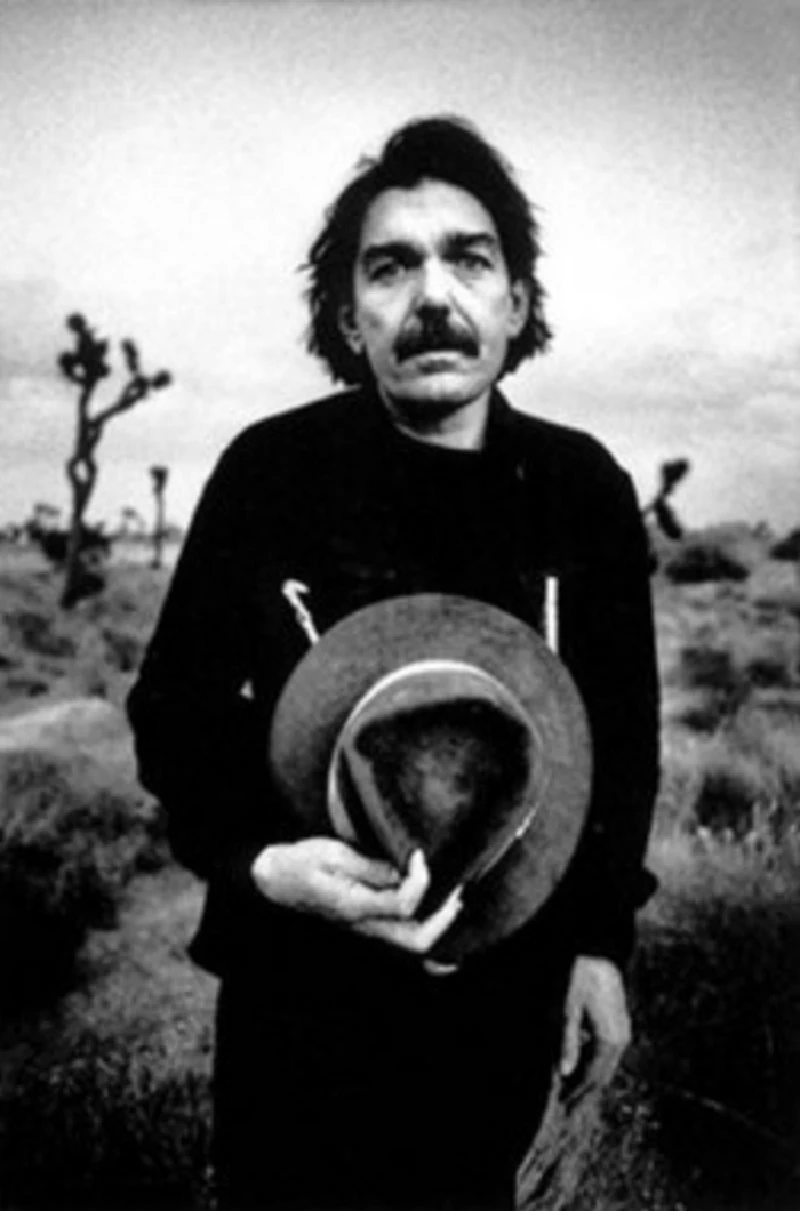
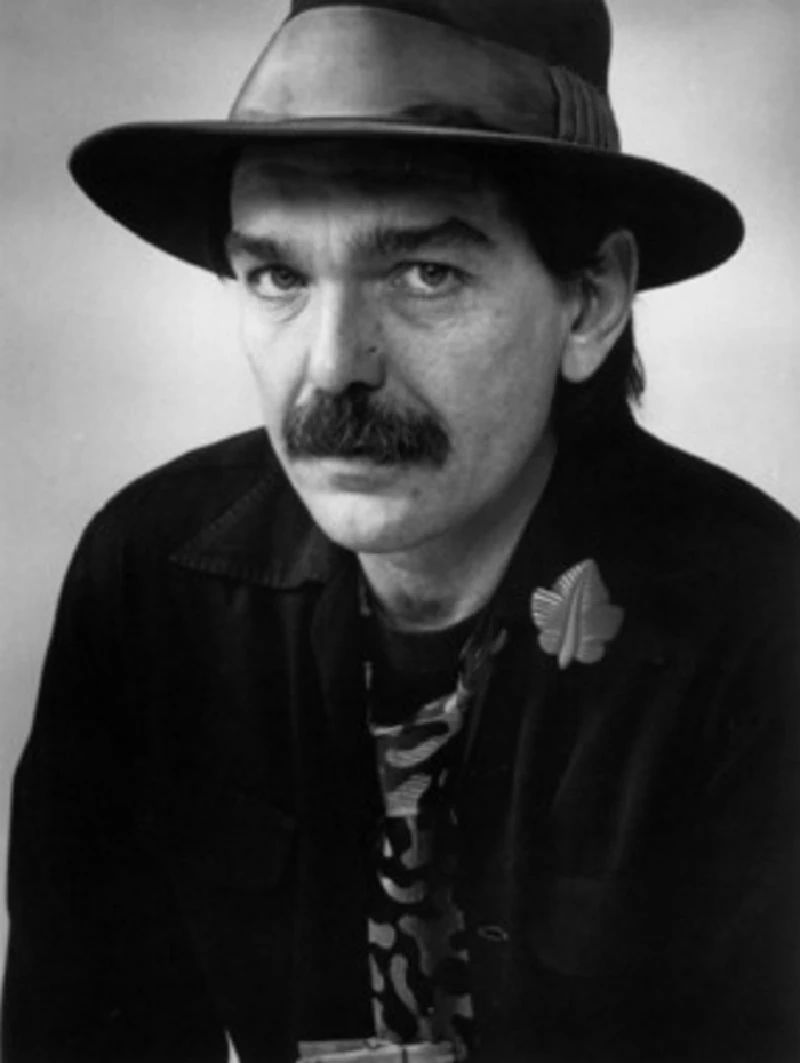
profiles |
|
Captain Beefheart (2011) |
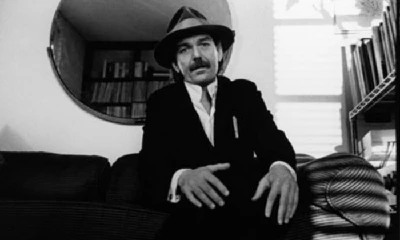
|
| Maarten Schiethart recollects the career of the late Captain Beefheart, who would have been 70 this year |
features |
|
Ten Songs That Made Me Love... (2014) |
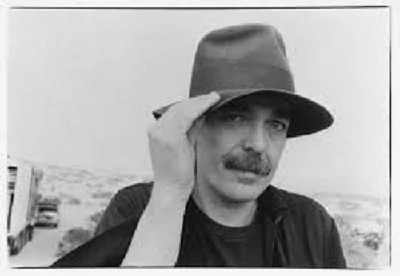
|
| In 'Ten Songs that Made Me Love...' Nicky Crewe reflects on her favourite songs by Captain Beefheart |
reviews |
|
Le Nouvel Hippodrome, Paris 1977 (2014) |
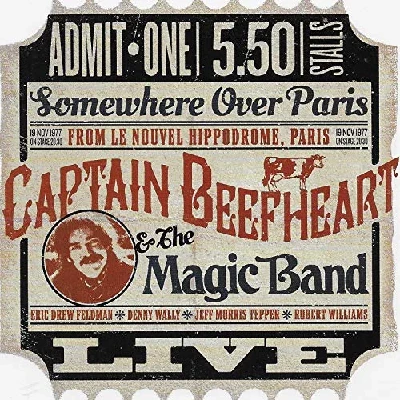
|
| First-rate double CD live album, recorded in Paris in 1977, from Captain Beefheart and the Magic Band |
most viewed articles
current edition
John McKay - InterviewCathode Ray - Interview
Robert Forster - Interview
When Rivers Meet - Waterfront, Norwich, 29/5/2025
Spear Of Destiny - Interview
Fiona Hutchings - Interview
Carl Ewens - David Bowie 1964 to 1982 On Track: Every Album, Every Song
Chris Wade - Interview
Shrag - Huw Stephens Session 08.12.10 and Marc Riley Session 21.03.12
Brian Wilson - Ten Songs That Made Me Love...
previous editions
Heavenly - P.U.N.K. Girl EPBoomtown Rats - Ten Songs That Made Me Love....
Manic Street Preachers - (Gig of a Lifetime) Millennium Stadium, Cardiff, December 1999
Allan Clarke - Interview
Oasis - Oasis, Earl's Court, London, 1995
Barrie Barlow - Interview
Beautiful South - Ten Songs That Made Me Love...
Pixies - Ten Songs That Made Me Love...
Chuck Prophet - Ten Songs That Made Me Love...
Dwina Gibb - Interview
most viewed reviews
current edition
Peter Doolan - I Am a Tree Rooted to the Spot and a Snake Moves Around Me,in a CircleVinny Peculiar - Things Too Long Left Unsaid
Garbage - Let All That We Imagine Be The Light
Vultures - Liz Kershaw Session 16.06.88
John McKay - Sixes and #Sevens
Little Simz - Lotus
HAIM - I Quit
Pulp - More
Lapsley - I'm a Hurricane, I'm a Woman In Love
Billy Nomates - Metalhorse
Pennyblackmusic Regular Contributors
Adrian Janes
Amanda J. Window
Andrew Twambley
Anthony Dhanendran
Benjamin Howarth
Cila Warncke
Daniel Cressey
Darren Aston
Dastardly
Dave Goodwin
Denzil Watson
Dominic B. Simpson
Eoghan Lyng
Fiona Hutchings
Harry Sherriff
Helen Tipping
Jamie Rowland
John Clarkson
Julie Cruickshank
Kimberly Bright
Lisa Torem
Maarten Schiethart